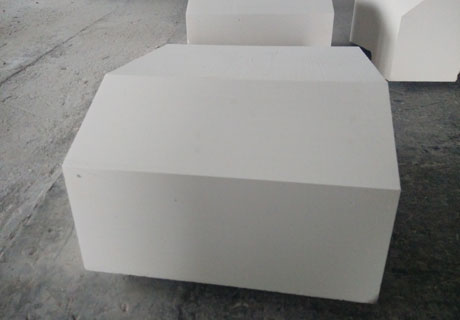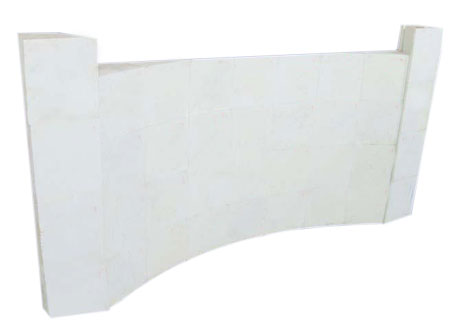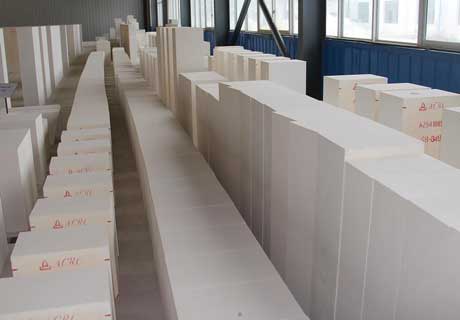
In the realm of high-temperature metallurgical processes, especially those operating above 1770°C, the choice of refractory materials critically impacts furnace longevity, maintenance cost, and overall production efficiency. The persistent challenges—thermal shock resistance, mechanical integrity at elevated temperatures, and controlled thermal conductivity—pose formidable hurdles for materials selection.
This guide comprehensively unpacks the properties and practical advantages of alumina-zirconia composite sintered zircon corundum bricks designed to withstand extreme conditions between 1770°C and 2000°C. Drawing on validated industry cases from steel continuous casting, non-ferrous metal smelting, and chemical processing sectors, this tutorial offers technical procurement professionals a reliable framework for informed material selection, aiming to extend furnace lining service life, optimize furnace performance, and access tailor-made refractory solutions.
Furnaces operating beyond 1770°C endure strenuous thermal cycles, frequently leading to thermal shock fractures, spalling, and premature degradation. Common pitfalls in material choice include underestimating thermal expansion mismatches and inadequate resistance to alkali or slag penetration. These failures escalate downtime and maintenance expenditures, undermining production continuity.
An illustrative example: a steel plant in eastern Europe reported furnace lining failure rates of ~12% annually due to conventional fireclay bricks’ insufficient hot modulus of rupture and high thermal conductivity, causing excessive heat loss and structural compromise.
The alumina-zirconia composite sintered zircon corundum brick is engineered by synergistically combining high-purity alumina (Al₂O₃) with stabilized zirconia (ZrO₂). This composite leverages alumina’s high melting point (≈2050°C) and chemical inertness with zirconia’s phase transformation toughening and thermal shock resistance.
| Parameter | Typical Value | Unit |
|---|---|---|
| Bulk Density | 3.85 - 3.95 | g/cm³ |
| Cold Crushing Strength | ≥ 80 | MPa |
| Thermal Expansion Coefficient (20-1500°C) | 6.3 - 7.0 | ×10⁻⁶ K⁻¹ |
| Thermal Conductivity (1000°C) | 4.8 - 5.2 | W/(m·K) |
These parameters ensure the bricks withstand high stress and cyclical temperature fluctuations without catastrophic failure. The lower thermal expansion reduces cracking risk, while controlled thermal conductivity balances insulation and heat dissipation, directly contributing to furnace thermal efficiency.
Modern production lines deploy computer-controlled pressing, precise sintering schedules, and non-destructive testing to guarantee homogeneity and batch-to-batch reproducibility. This level of automation reduces human error and yields stable microstructures, critical for maintaining refractory performance in hostile environments.
For instance, during a recent pilot in a Chinese steel mill, automated sintering reduced variability in cold crushing strength by 15%, thereby lowering the occurrence of refractory failures during furnace heat-up cycles.
The bricks have demonstrated exceptional durability in continuous casting tundishes within steelmaking plants, replacing traditional alumina bricks and achieving an average lifespan extension of 30%. In the non-ferrous metallurgy arena, their chemical inertness minimizes slag corrosion during copper and nickel smelting.
Chemical reactors operating at sustained high temperatures benefit from the thermal shock resistance and minimal impurity leaching of these composite bricks, contributing to stable reaction environments and lower contamination risks.
“Upgrading to alumina-zirconia sintered bricks led to a significant reduction in furnace downtime at our continuous casting facility in Germany. Over six months, we noted a 25% decrease in maintenance costs and improved thermal efficiency. The supplier’s customized solution tailored to our production load was instrumental.” – Plant Engineer, EU Steelworks
Selecting the optimal refractory brick requires aligning material properties with operational parameters: maximum working temperature, thermal cycling frequency, mechanical loads, and chemical atmosphere. Using a systematic approach encompassing real operating profiles and cost-benefit analysis maximizes return on investment.
Moreover, suppliers offering tailored mixing ratios and brick dimensions, coupled with industry certifications such as ISO9001 and CE compliance, provide enhanced confidence in quality and global after-sales support networks.

| Feature | Alumina-Zirconia Composite | Traditional Fireclay Brick |
|---|---|---|
| Maximum Service Temperature | 1770°C - 2000°C | ≤ 1600°C |
| Thermal Shock Resistance | High | Moderate to Low |
| Mechanical Strength (Cold Crushing) | ≥ 80 MPa | ~40 MPa |
| Thermal Conductivity (1000°C) | 4.8 - 5.2 W/m·K | ~7 W/m·K |
| Typical Service Life (Industrial Use) | 3 - 5 years | 1 - 2 years |
Evidently, alumina-zirconia composite bricks enhance furnace reliability while reducing heat loss and maintenance frequency, which altogether improve production efficiencies in demanding metallurgical settings.

Procurement managers gain additional assurance when refractory suppliers maintain strict adherence to international standards such as ISO9001 for quality management and CE certifications indicative of compliance with European safety requirements. A robust global after-sales service system ensures rapid response to technical queries or on-site support, which is critical given the complexity of furnace operations.

Notably, customized service packages including refractory diagnostics, installation training, and post-installation monitoring facilitate smooth integration within existing operations, thereby maximizing the material’s value over its lifecycle.
If your industry faces similar refractory challenges, or you have questions about specific furnace conditions, leave a comment or ask for three relevant case studies aligned with your sector. Let’s unlock optimal refractory choices together!








